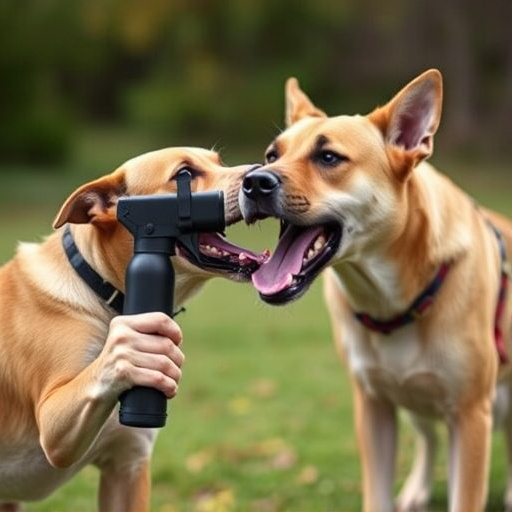Dog attacks pose significant risks requiring urgent emergency care for both animals and victims. Prompt action, understanding canine behaviors, and effective response strategies are crucial in promoting safer interactions between humans and dogs. Mace serves as a vital self-defense tool in emergency situations, with proper application techniques essential to temporarily stun and deter aggression. Legal implications and responsible use of mace vary by region, emphasizing the need for checking local laws and following specific emergency care protocols for maced animals to ensure animal welfare and human safety.
In the face of unexpected dog attacks, knowing how to defend yourself is crucial for your safety and well-being. This article delves into the world of emergency care for mace animals, exploring the impact of dog assaults and the vital role that pepper spray can play in deterring and mitigating such incidents. We’ll guide you through understanding dog behavior, mastering application techniques, and navigating legal considerations to ensure responsible use during these high-stakes situations.
- Understanding Dog Attacks and Their Impact
- The Role of Mace in Emergency Animal Defense
- Application Techniques for Effective Protection
- Legal Considerations and Responsible Use of Mace
Understanding Dog Attacks and Their Impact
Dog attacks can have severe physical and emotional impacts on victims, highlighting the importance of understanding this growing concern. In many cases, unexpected encounters with aggressive dogs lead to emergency care for both the injured party and the animal involved. Prompt action is crucial; immediate first aid and veterinary attention can significantly improve outcomes for all parties.
Recognizing the severity of dog attacks and their potential consequences fosters a sense of responsibility among pet owners and the community at large. Ensuring proper training, control, and care for pets can help mitigate these incidents. Understanding the behaviors that may lead to attacks and knowing how to respond effectively is an essential step in promoting safer interactions between humans and dogs.
The Role of Mace in Emergency Animal Defense
In moments of emergency, especially during dog attacks, having a reliable tool for self-defense can make all the difference in ensuring the safety and well-being of both your pet and yourself. Mace, specifically designed for animal defense, plays a pivotal role in these critical situations. It serves as a temporary yet effective deterrent, allowing individuals to create space and escape potential harm.
The use of mace in emergency care for maced animals is not just about physical protection; it also provides valuable time for owners to seek veterinary assistance or implement other safety measures. This non-lethal approach is particularly crucial when dealing with aggressive dogs, as it enables responsible pet owners to defuse potentially lethal encounters while prioritizing the overall well-being of all parties involved.
Application Techniques for Effective Protection
When using a mace for dog attack defense, understanding proper application techniques is crucial for effective protection. The first step involves assessing the situation and identifying the threat level. If a dog approaches aggressively, aim for its face—eyes, nose, and mouth—to temporarily stun and deter the attack. This tactic requires precision and quick reflexes to ensure both your safety and the animal’s well-being during emergency care for maced animals.
Remember that mace is not a substitute for avoiding dangerous encounters. It should be used as a last resort when facing an out-of-control dog. After applying the mace, back away slowly and seek immediate medical attention if necessary. Proper training in using protective tools, along with knowledge of local laws regarding animal control, will enhance your ability to handle such emergencies effectively while prioritizing emergency care for maced animals.
Legal Considerations and Responsible Use of Mace
When considering mace as a defense against dog attacks, it’s crucial to understand the legal implications and responsible use. The legality of macing animals varies by region; always check local laws to ensure compliance. In many areas, emergency care for maced animals is a strict necessity, with specific regulations in place to protect both animal welfare and human safety. Responsible use involves aiming accurately and avoiding unnecessary exposure, as mace can have harmful effects on eyes, skin, and respiratory systems—not just of the targeted dog but also bystanders. Improper use may lead to legal repercussions and harm to innocent parties, exacerbating an already stressful situation.
In conclusion, understanding dog attacks and their impact is crucial for anyone seeking emergency care for maced animals. The role of mace as a defense mechanism, combined with proper application techniques, can significantly enhance safety during such encounters. However, it’s essential to navigate legal considerations and use mace responsibly, ensuring its effectiveness without causing undue harm. By arming ourselves with knowledge and utilizing tools like mace appropriately, we can better protect both ourselves and affected animals in these challenging situations.
